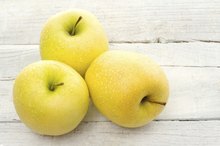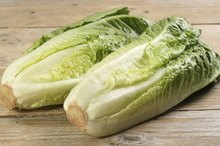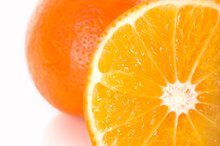Minerals in Fruits & Vegetables
Minerals support your health by assisting in energy production, maintaining body fluids, cellular health, bone strength and immunity 3. Minerals that your body requires in varying amounts include calcium, potassium phosphorus, magnesium, sodium, chloride, sulfur, manganese, zinc, copper, iodine, cobalt, selenium and fluoride 3. You can find a variety of these essential minerals in fruits and vegetables 3.
Orange and Yellow Fruits and Vegetables
Typically, their color comes from natural plant pigments called carotenoids that offer various health benefits. These healthful foods contain vitamin A and potassium. Sweet potatoes, for example, contain the minerals manganese, potassium, copper and iron 3. Oranges are sources of potassium and calcium.
- Typically, their color comes from natural plant pigments called carotenoids that offer various health benefits.
- These healthful foods contain vitamin A and potassium.
Red Fruits and Vegetables
Calories in a Yellow Apple
Learn More
Red fruits and vegetables include:
- red peppers
- strawberries
- radicchio
- beets
- cranberries
- rhubarb
- radishes
- tomatoes
Their color usually comes from natural plant pigments called lycopene or anthocyanins, which may help reduce the risk of chronic diseases. You’ll receive a healthy dose of many phytonutrients, vitamins and minerals from these bright fruits and vegetables 3. For example, beets contain manganese, potassium, magnesium and iron. A red fruit such as
- tomato contains potassium
- manganese
- copper
- magnesium
- iron
- phosphorus
- Red fruits and vegetables include: * red peppers
* strawberries
* radicchio
* beets
* cranberries
* rhubarb
* radishes
* tomatoes Their color usually comes from natural plant pigments called lycopene or anthocyanins, which may help reduce the risk of chronic diseases.
Green Fruits and Vegetables
Green fruits and vegetables include:
- broccoli
- kale
- arugula
- green apples
- kiwis
- collard greens
- spinach
- Swiss chard
- limes
- honeydew melons
- romaine lettuce
Their color comes from natural plant pigments called chlorophyll. Kiwi contains potassium, copper, magnesium and manganese.
Considerations
Vitamins and Minerals for Fever Blisters
Learn More
Macrominerals and trace minerals are the two forms of minerals 3. Your body requires larger amounts of macrominerals than trace minerals 3. Macrominerals include:
- calcium
- magnesium
- phosphorus
- sodium
- potassium
- chloride
- sulfur
Your body only requires small amounts of trace minerals and these include
- iron
- manganese
- copper
- cobalt
- zinc
- iodine
- fluoride
- selenium 3
Your doctor can recommend the correct mineral values to help ensure they are working for you.
Related Articles
References
Writer Bio
Jonathan VanDam has written professionally for work assignments since 2006. He currently works in the counseling and academic fields. He obtained his Bachelor of Science in psychology from Mercy College in 2007 and Master of Science in psychology from University of Phoenix in 2009. VanDam is currently pursuing his Ph.D. in health psychology.








